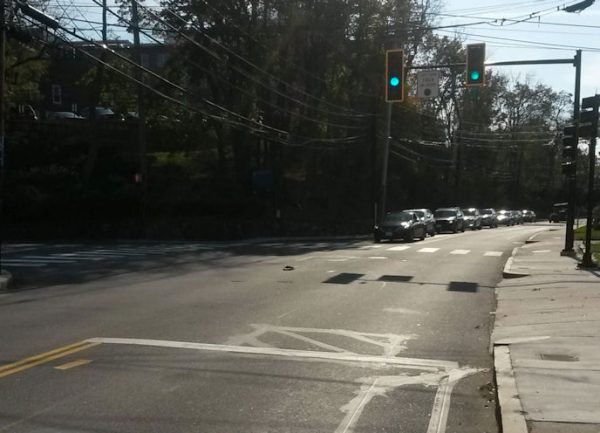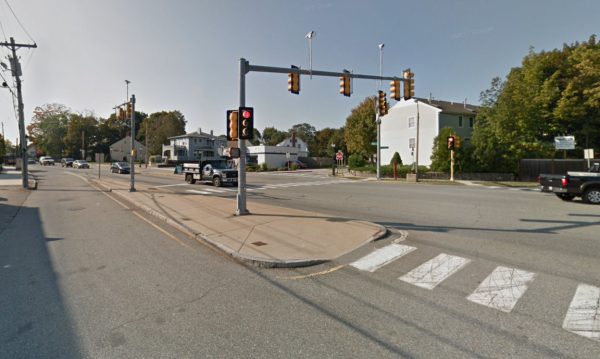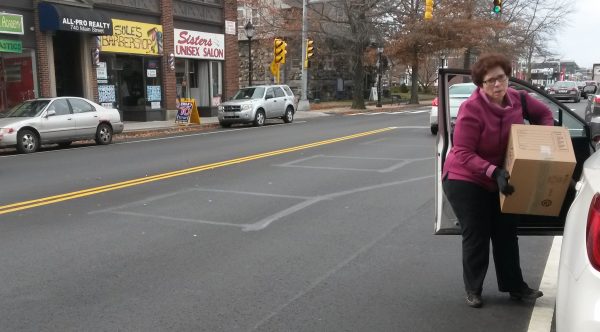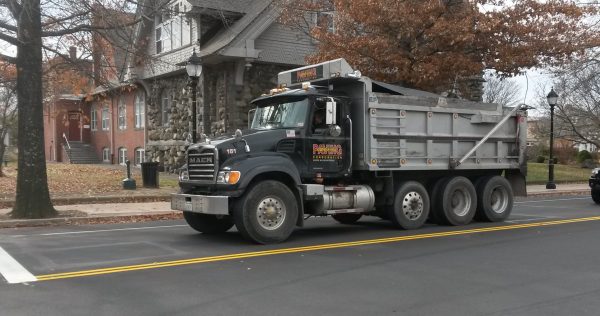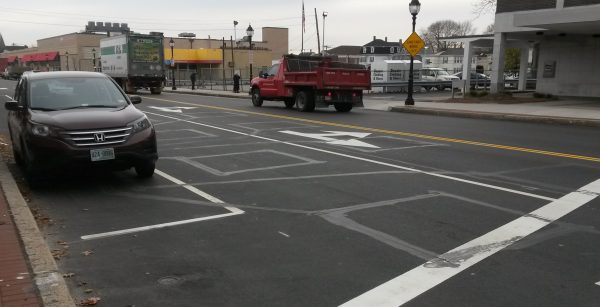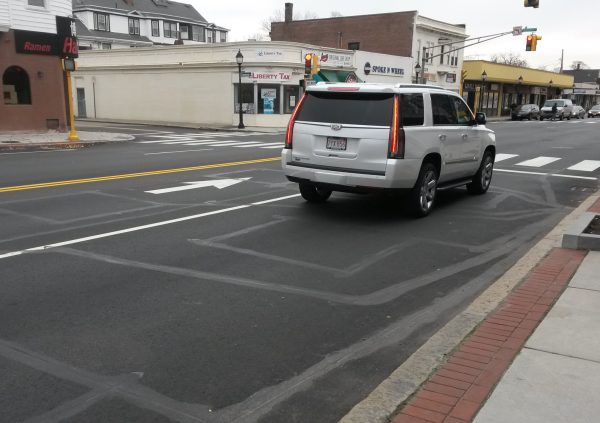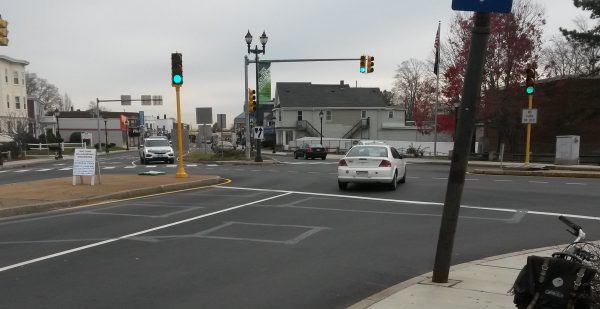Why are we still seeing traffic-signal actuators which won’t trigger the signal for bicycles or motorcycles?
I have made a short video of a Waltham intersection, Bedford and South Streets. This illustrates the problem which a bicyclist or motorcyclist faces with many traffic-signal actuators.
Another issue at this same intersection is that many westbound motorists pull forward past the stop line, but there is then no loop under their vehicle and the light does not change. Drivers do this so they can look left to check whether it is safe to turn right on red, but some also do it when they intend to travel straight across the intersection or turn left.
Due to policy issues and different entities specifying and installing actuator loops, their installation is inconsistent. Some are better. Here is a photo of bicycle-sensitive quadrapole loops (if correctly adjusted) on Tavern Road at Weston Street. I think that these were installed by the Massachusetts Department ofTransportation.
There is a bicycle-sensitive California D-type loop on South Street, though it is after the stop line. Drivers are unlikely to pull past the stop line here, as there is no sight-line issue, and they would be blocking traffic entering the driveway on the right.
The devices nearest the top in the picture below, at the intersection of Main Street and Linden Street, are vehicle-sensing video cameras. These work even at night for a bicyclist who has a rather weak headlight, if the bicyclist leans the bicycle to aim the headlight at the camera which points in the bicyclist’s direction.
The installations shown in the photos and video above have all been in place for a year or more. However, a stretch of Main street (Route 20 and Route 117) in Waltham was repaved in the fall of 2018. Then following the repaving, traffic-signal actuator loops were installed — the obsolete kind, plain rectangular loops of wire.
Installing the good kind involves only laying the wires in a different pattern and adjusting the sensitivity in the control box. No new equipment or supplies are needed.
Examples, east to west on Main Street:
I have discussed the actuator issue with Tim Kelly of the Signals and Wires Department, City of Waltham, and he told me that he is entirely in favor of having responsive signals, but that installations are changed only when a street is reconstructed: not when it is only repaved, as was the case with Main Street. The problem, then, is bureaucratic: it requires a change in policy, and minor changes in specifications and procedures.
More than one government entity may need to be addressed: some streets and street projects are under the jurisdiction of the Massachusetts Highway Department, and others, the Department of Conservation and Recreation. The Massachusetts Highway Department has generally been good about installing bicycle-sensitive actuators, and so it is perplexing that the new actuators on Main Street, part of Massachusetts Route 20, are not bicycle sensitive. Others on Main Street are bicycle-sensitive, as shown in other photos in this article. I would like to know who was in charge of these. Most of all, I want the City of Waltham consistently to require sensors which respond to bicycles and motorcycles. The city has a place at the table in discussion of all projects.
A technical description of how actuator loops work is here.
Massachusetts design standards for signal actuation are discussed and described here.
Additional documentation is here.
The definitive report on actuator loop design and installation, published 1986, is here.
Comments on some previous loop installations in Massachusetts are here.


